
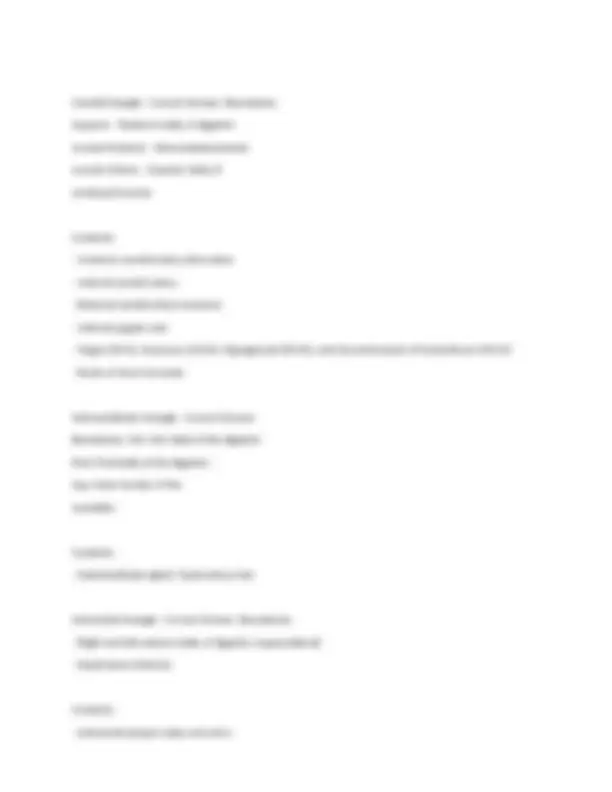
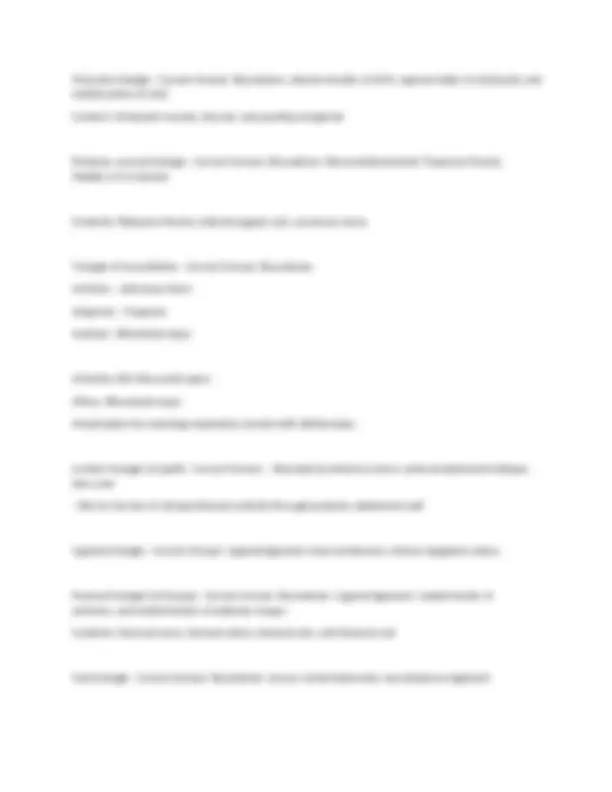
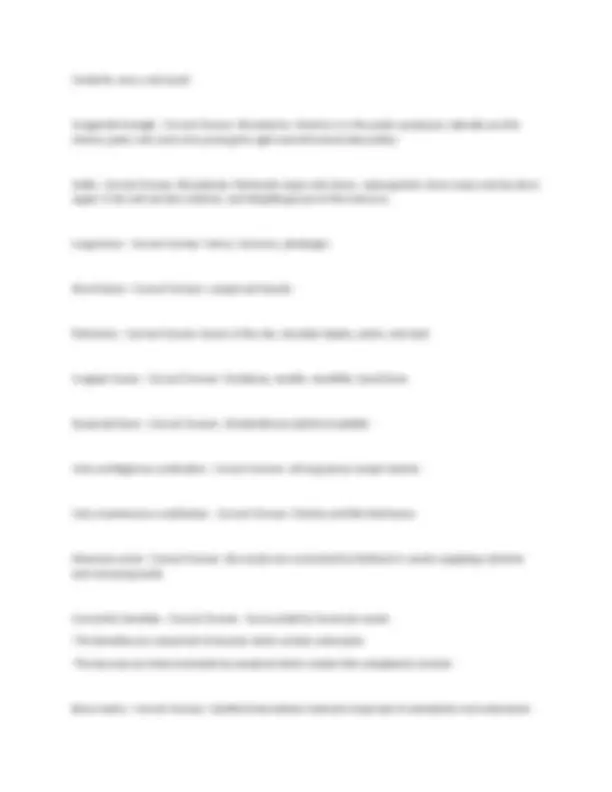
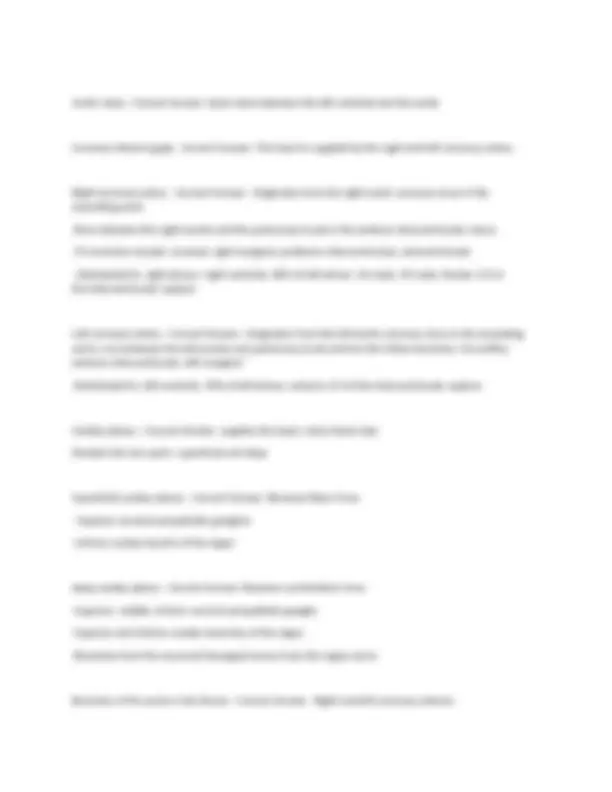
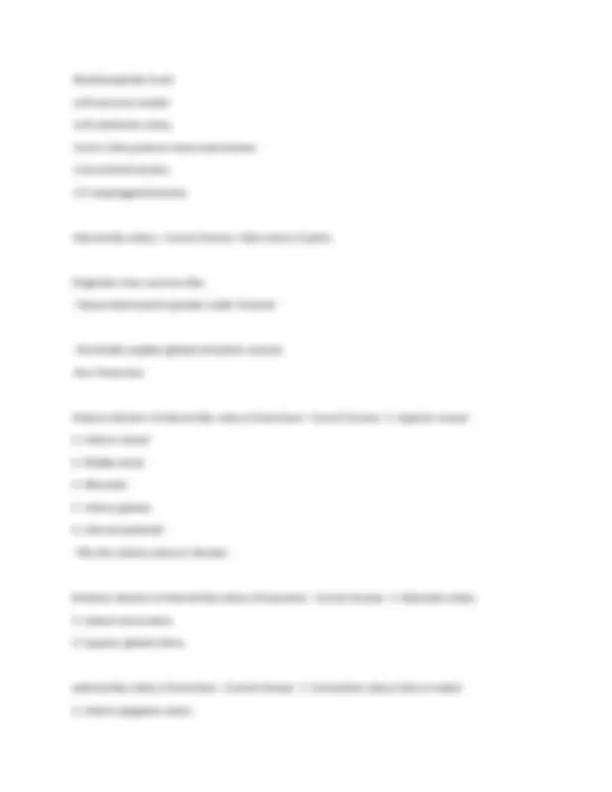
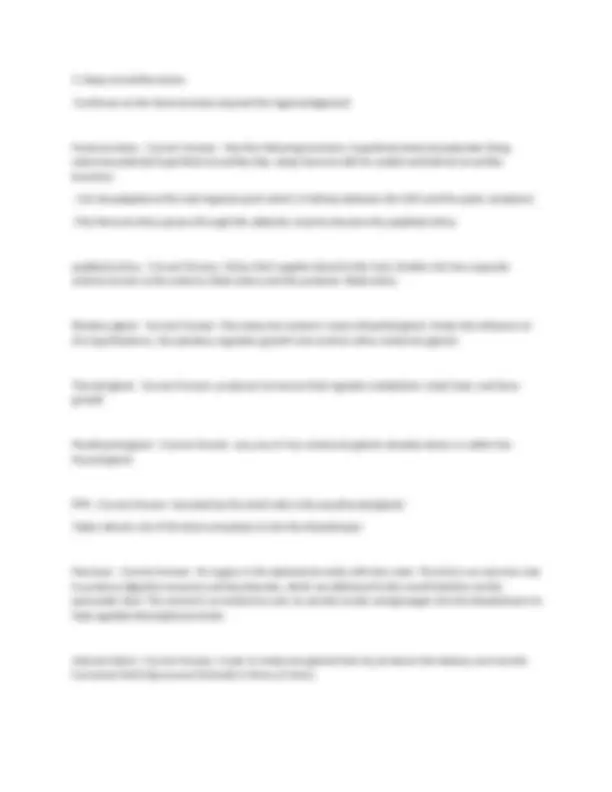
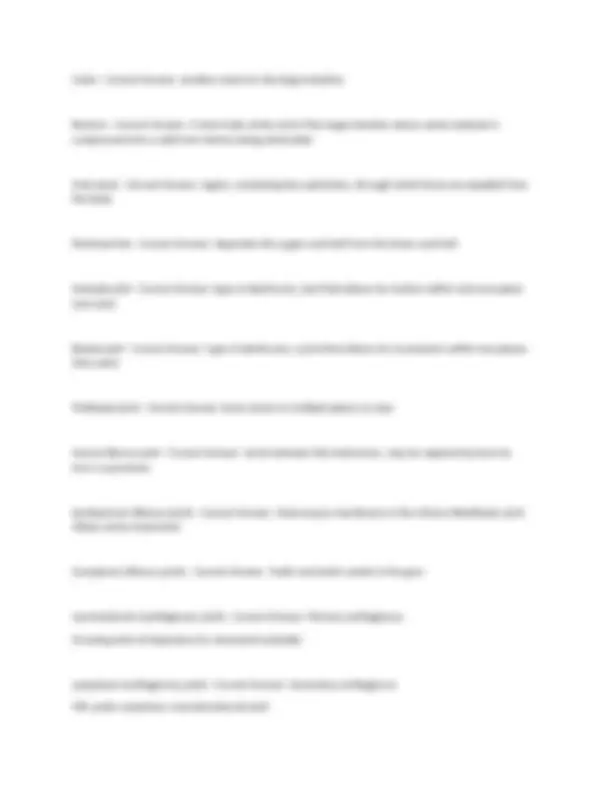
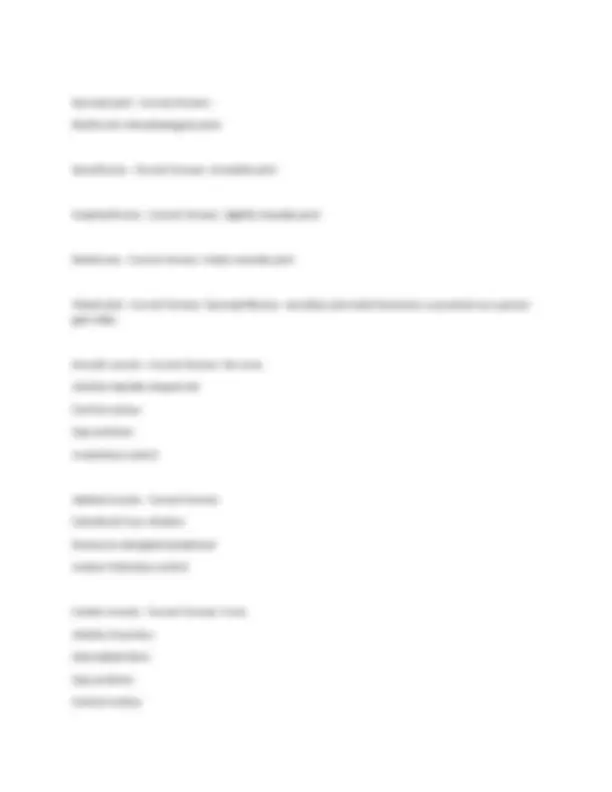
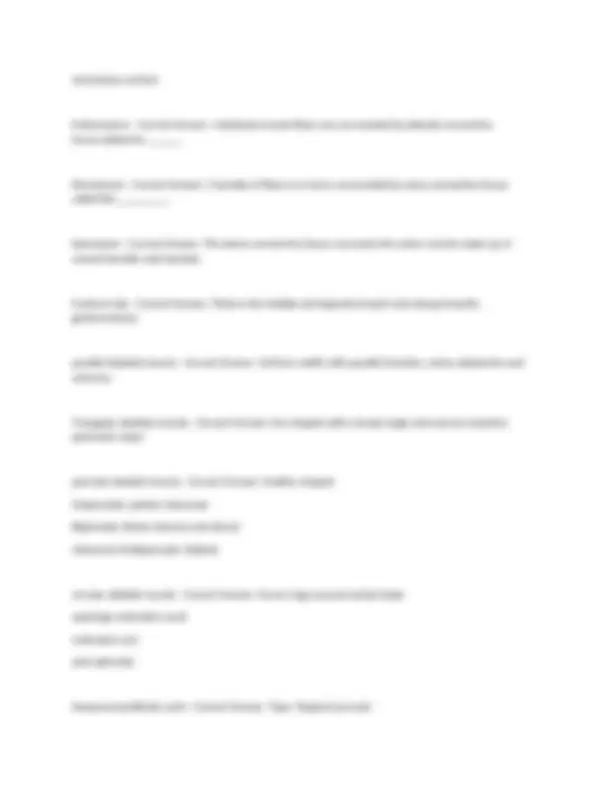
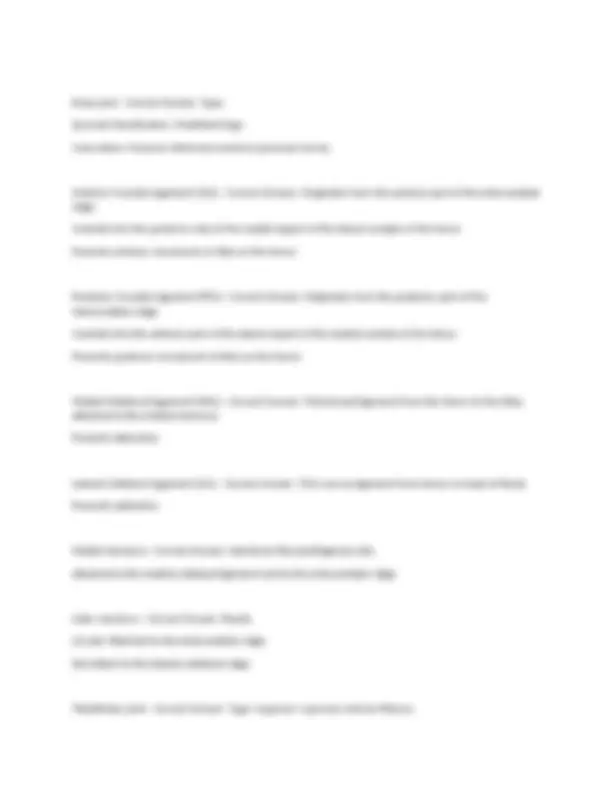
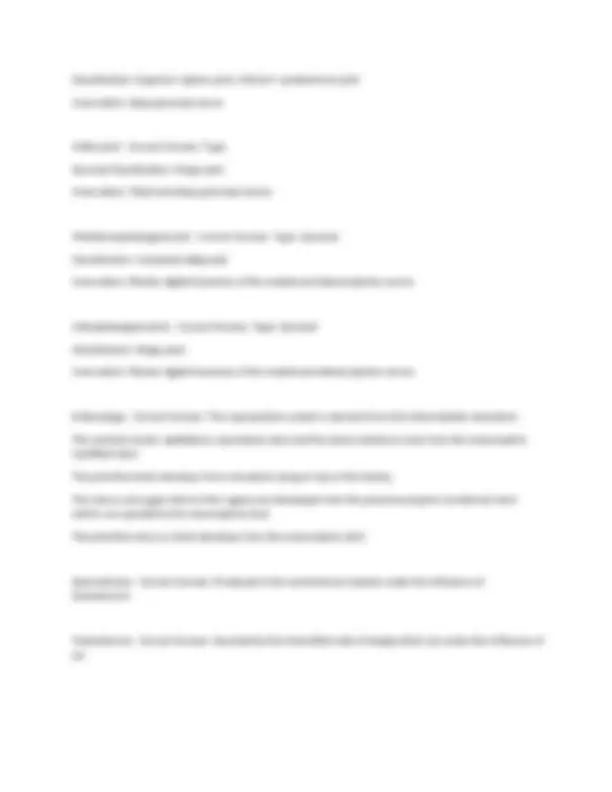
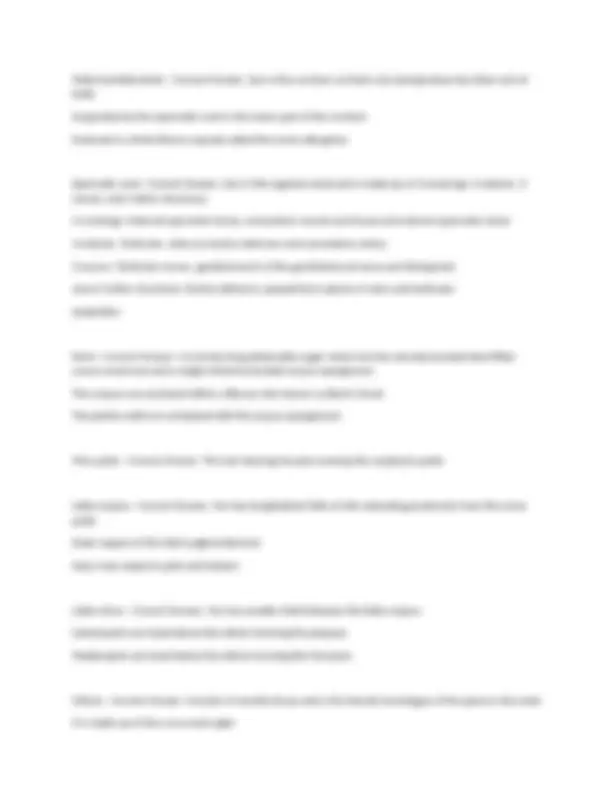
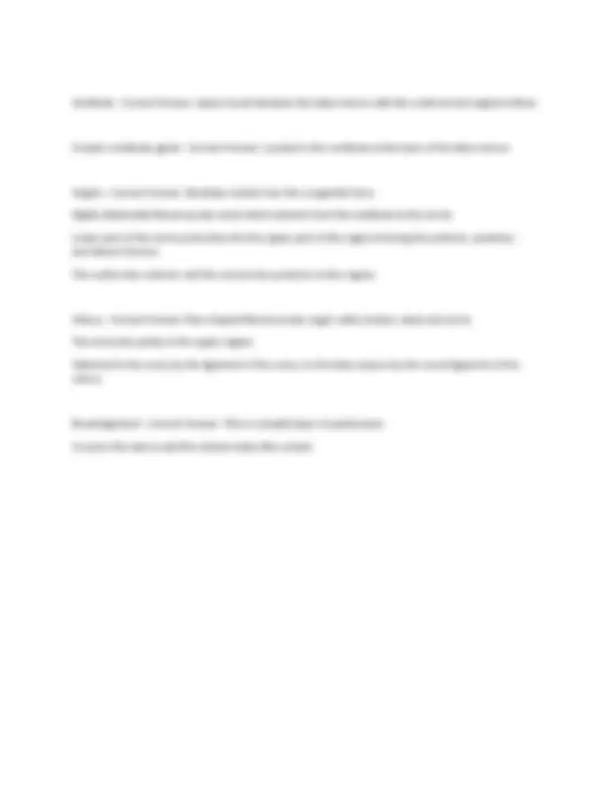


Study with the several resources on Docsity

Earn points by helping other students or get them with a premium plan


Prepare for your exams
Study with the several resources on Docsity

Earn points to download
Earn points by helping other students or get them with a premium plan
Community
Ask the community for help and clear up your study doubts
Discover the best universities in your country according to Docsity users
Free resources
Download our free guides on studying techniques, anxiety management strategies, and thesis advice from Docsity tutors
Detailed information about various organs and structures in the human body, focusing on the endocrine and digestive systems. It covers the thyroid gland, parathyroid gland, pth, pancreas, stomach, duodenum, biliary tree, small intestine, colon, rectum, anal canal, joints, nerves, and reproductive system. It explains their functions, locations, and classifications, as well as their innervation and embryological development.
Typology: Exams
1 / 21

This page cannot be seen from the preview
Don't miss anything!














simple squamous epithelium - Correct Answer: Lining lymphatic and blood vessels, pleura and peritoneum stratified squamous epithelium - Correct Answer: Skin, oral cavity, esophagus, lower half of the anal canal Cuboidal Epithelium - Correct Answer: -Bowman's capsule, convoluted tubules of the kidneys, thyroid follicles simple columnar epithelium - Correct Answer: Lining of gastrointestinal tract stratified columnar epithelium - Correct Answer: Lining of uterine tube pseudostratified columnar epithelium - Correct Answer: Lining of the respiratory tract transitional epithelium - Correct Answer: Lining of ureter, urinary bladder and most of the urethra Endoderm - Correct Answer: Lies on the inside and gives rise to the following:
Muscular triangle - Correct Answer: Boundaries: anterior border of SCM, superior belly of omohyoid, and median plane of neck Content: infrahyoid muscles, thyroid, and parathyroid glands Posterior cervical triangle - Correct Answer: Boundaries: Sternocleidomastoid, Trapezius Muscle, Middle 1/3 of clavicle Contents: Platysma Muscle, external jugular vein, accessory nerve Triangle of Auscultation - Correct Answer: Boundaries:
Contents: anus, anal canal Urogenital triangle - Correct Answer: Boundaries: Anterior is is the pubic symphysis, laterally are the inferior pubic rami and a line joining the right and left ischial tuberosities Axilla - Correct Answer: Boundaries: Pectoralis major and minor, subscapularis, teres major and lay dorsi, upper 4 ribs and serratus anterior, and bicipitla groove of the humurus Long bones - Correct Answer: femur, humerus, phalanges Short bones - Correct Answer: carpals and tarsals Flat bones - Correct Answer: bones of the ribs, shoulder blades, pelvis, and skull Irregular bones - Correct Answer: Vertebrae, maxilla, mandible, hyoid bone Sesamoid bone - Correct Answer: Intratendinous (pisiform patella) Intra-cartilaginous ossification - Correct Answer: all long bones except clavicle Intra-membranous ossification - Correct Answer: Clavicle and flat skull bones Haversian canal - Correct Answer: the canals are connected by Volkmann's canals supplying nutrients and removing waste Concentric lamellae - Correct Answer: -Surrounded by haversian canals -The lamellae are comprised of lacunae which contain osteocytes -The lacunae are interconnected by canaliculi which contain thin cytoplasmic strands Bone matrix - Correct Answer: Calcified intercellular material comprised of osteoblasts and osteoclasts
Inferior heart border - Correct Answer: Made of the right ventricle Left heart border - Correct Answer: left ventricle and left auricle of left atrium Right atrium - Correct Answer: -Has two origins: from the sinus venosus and from the true atrium -The rough part is derived from the true atrium -The smooth part is derived fromt he sinus venosus embryologically -They are separated by a ridge called the crista terminalis which is represented on the external surface of the right atrium by the sulcus terminalis -The opening of the Superior Vena Cava and Inverior are location in the superior and inferior aspects Left atrium - Correct Answer: -It has the opening of the four pulmonary veins carrying oxygenated blood from the lungs -Like the right atrium, it had both rough and smooth parts reflecting its dual embryological origins Right ventricle - Correct Answer: -It has several large fleshy trabeculae carneae and papillary muscles -There is a large fleshy piece called the septomarginal branch (moderator branch) which carries a major part of the right bundle branch and prevents overfilling -The infundibulum is a smooth funnel-shaped inlet ot the opening of the pulmonary valves Left ventricle - Correct Answer: -It has a thick muscular wall with trabeculae carneae -The elft ventricle is separated fromt he right ventricle by the interventricular septum Tricuspid valve - Correct Answer: valve between the right atrium and the right ventricle Pulmonary valve - Correct Answer: valve positioned between the right ventricle and the pulmonary artery Mitral valve - Correct Answer: valve between the left atrium and the left ventricle; bicuspid valve
Aortic valve - Correct Answer: heart valve between the left ventricle and the aorta Coronary blood supply - Correct Answer: The heart is supplied by the right and left coronary artery. Right coronary artery - Correct Answer: -Originates from the right aortic coronary sinus in the ascending aorta -Runs between the right auricle and the pulmonary trunk in the anterior atrioventricular sulcus -ITs branches include: sinutrial, right marginal, postterior interventricular, atrioventricular
Foregut - Correct Answer: -Supplied by the celiac trunk
Colon - Correct Answer: another name for the large intestine Rectum - Correct Answer: A short tube at the end of the large intestine where waste material is compressed into a solid form before being eliminated Anal canal - Correct Answer: region, containing two sphincters, through which feces are expelled from the body Pectineal line - Correct Answer: Separates the upper anal half from the lower anal half Uniaxial joint - Correct Answer: type of diarthrosis; joint that allows for motion within only one plane (one axis) Biaxial joint - Correct Answer: type of diarthrosis; a joint that allows for movements within two planes (two axes) Multiaxial joint - Correct Answer: bone moves in multiple planes or axes Sutural fibrous joint - Correct Answer: Joints between flat skull bones, may be replaced by bone to form a synostosis Syndesmosis (fibrous joint) - Correct Answer: Interosseous membrane in the inferior tibiofibular joint. Allows some movement Gomphosis (fibrous joint) - Correct Answer: Tooth and tooth socket in the gum synchondrosis (cartilaginous joint) - Correct Answer: Primary cartilaginous. Growing ends of long bone (no movement actually) symphysis (cartilaginous joint) - Correct Answer: Secondary cartilaginous IVD, pubic symphysis, manubriosternal joint
Synovial joint - Correct Answer: Diarthrosis Interphalangeal joints Synarthrosis - Correct Answer: immobile joint Amphiarthrosis - Correct Answer: slightly movable joint Diarthrosis - Correct Answer: freely movable joint Mixed joint - Correct Answer: Synovial/fibrous- sacroiliac joint which becomes a synostosis as a person gets older Smooth muscle - Correct Answer: No cross striation Spindle-shaped cell Central nucleus Gap junctions Involuntary control skeletal muscle - Correct Answer: Cylindrical Cross striation Numerous elongated peripheral nucleus Voluntary control Cardiac muscle - Correct Answer: Cross striation branches intercalated discs Gap junctions Central nucleus
Classification: Compound hinge and gliding joint Bones involved: Condyle of the mandible, mandibular fossa and articular eminence of the temporal bone Range of motion: Elevation, depression, protraction, retraction, and side to side Innervation: Auriculotemporal, deep temporal and masseteric branches of CN V Shoulder joint - Correct Answer: Type: Synovial Classification: Ball and socket Bones involved: Glenoid fossa, and head of humerus Innervation: Axillary and suprascapular nerves Sternoclavicular joint - Correct Answer: Type: Synovial with an intra-articular dis Classification: Saddle type but behaves as a ball and socket Innervation: Medial branch of the supraclavicular nerves and nerve to subclavius Elbow joint - Correct Answer: Type: Synovial Classification: Hinge Innervation: Radial and musculocutaneous nerves Proximal and distal Radio-ulnar joints - Correct Answer: Type: Synovial Classification: Pivot joint (trochoid) Innervation: median, ulnar and radial nerves Wrist joint - Correct Answer: Type: Synovial Classification: Condyloid joint (ellipsoid) Innervation: Radial, median, and ulnar nerves 1st carpometacarpal joint - Correct Answer: Type: Synovial Classification: Saddle (sellar) Innervation: Radial and median nerves
metacarpophalangeal joint - Correct Answer: Type: Synovial Classification: Condyloid joint (ellipsoid) Innervation: Median ulnar and radial nerves Interphalangeal joints - Correct Answer: Type: Synovial Classification: Hinge Innervation: Median, ulnar and radial nerves Hip joint - Correct Answer: Type: Synovial Classification: ball and socket Innervation: Femoral, obturator and nerve to quadratus femoris Round ligament of hip - Correct Answer: Intra-articular ligament From the head of the femur from the transverse acetabular ligament and the rim of the nearby acetabular notch to the fovea centralis of the femur Contains the central foveolar artery in children Iliofemoral ligament - Correct Answer: Extra articular ligament From the anterior inferior iliac spine to the root of the femoral neck Prevents hyperextension Pubofemoral ligament - Correct Answer: Extra-articular ligament From the superior pubic ramus to lower part of the capsule Prevents hyperabduction Ischiofemoral ligament - Correct Answer: Extra-articular ligament From the ischium to the posterior part of the capsule Prevents hyperextension
Classification: Superior= planar joint, Inferior= syndesmosis joint Innervation: deep peroneal nerve Ankle joint - Correct Answer: Type: Synovial Classification: Hinge joint Innervation: Tibial and deep peroneal nerves Metatarsophalangeal joint - Correct Answer: Type: Synovial Classification: Condyloid (ellipsoid) Innervation: Plantar digital branches of the medial and lateral plantar nerves Interphalangeal joints - Correct Answer: Type: Synovial Classification: Hinge joint Innervation: Plantar digital branches of the medial and lateral plantar nerves Embryology - Correct Answer: The reproductive system is derived from the intermediate mesoderm The seminal vesicle, epididymis, ejaculatory duct and the ductus deferens arise from the mesonephric (wolffian) duct The primitive testis develops from mesoderm lying on top of the kidney The uterus and upper third of the vagina are developed from the paramesonephric (mullerian) duct which runs parallel to the mesonephric duct The primitive ovary or testis develops from the mesonephric duct Spermatozoa - Correct Answer: Produced in the seminiferous tubules under the influence of testosterone Testosterone - Correct Answer: Secreted by the interstitial cells of leydig which are under the influence of LH
Male Genitalia-testis - Correct Answer: Lies in the scrotum so that is at a temperature less then rest of body Suspended by the spermatic cord in the lower part of the scrotum Enclosed in a thick fibrous capsule called the tunica albuginea Spermatic cord - Correct Answer: Lies in the inguinal canal and is made up of 3 coverings, 3 arteries, 3 nerves, and 3 other structures 3 coverings: External spermatic fascia, cremasteric muscle and fascia and internal spermatic fascia 3 arteries: Testicular, artery to ductus deferens and cremasteric artery 3 nerves: Testicular nerves, genital branch of the genitofemoral nerve and ilioinguinal nerve 3 other structures: Ductus deferens, pampiniform plexus of veins and testicular lymphatics Penis - Correct Answer: 4-6 inches long distensible organ which has two dorsally-located blod-filled corora cavernosa and a single inferiorly-located corpus spongiosum The corpora are enclosed within a fibrous shes known as Buck's fascia The penile urethra is contained with the corpus spongiosum Mon pubis - Correct Answer: The hair-bearing fat pad covering the symphysis pubis Labia majora - Correct Answer: Are two longitudinal folds of skin extending posteriorly from the mons pubis Outer aspect of this fold is pigmented and hairy Inner aspect is pink and hairless Labia minor - Correct Answer: Are two smaller folds between the labia majora Lateral parts are fused above the clitoris forming the prepuce Medial parts are fused below the clitoris forming the frenulum Clitoris - Correct Answer: Consists of erectile tissue and is the female homologue of the penis in the male It is made up of two crura and a glan